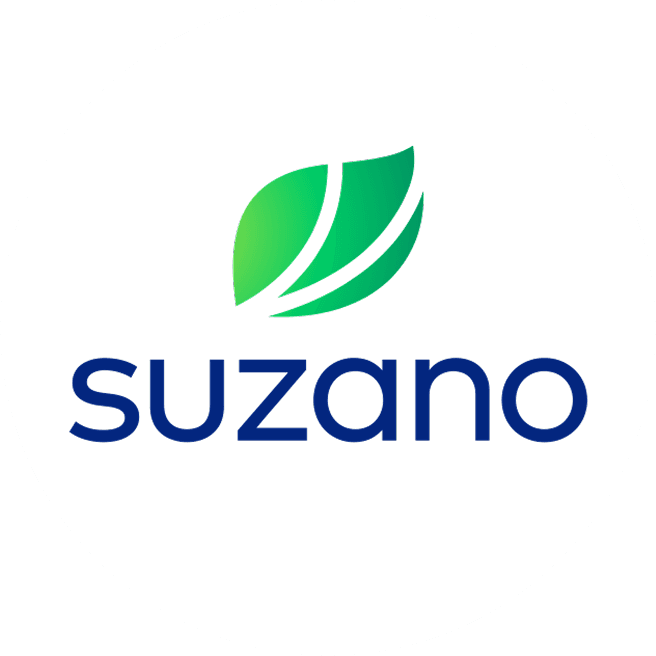
Convert industrial waste into soil treatment
 Suzano
Suzano总结
The initiative transforms industrial waste like grits, dregs, lime sludge and biomass ash into products that neutralize soil acidity
Context
Suzano operates large-scale pulp and paper production in Brazil, generating significant inorganic industrial residues such as grits, dregs, lime sludge, and biomass ash. These by-products, if unmanaged, can contribute to soil degradation and indirect greenhouse gas emissions from fertilizer use. To address this challenge, the company established Soil Corrective Production Centers, which transform these industrial residues into soil acidity neutralizers. This initiative not only improves soil health for agricultural use but also reduces emissions associated with conventional soil amendment production, supporting Suzano’s broader decarbonization and circularity goals.
Solution
Suzano has a long-term goal to reduce the solid waste sent to landfills by 70% by 2030. This case shows an innovative technology to reuse industrial waste in soil acidity neutralizer production.
To address the challenge of managing inorganic industrial residues and advancing circularity, Suzano established Soil Corrective Production Centers that convert by-products such as grits, dregs, lime sludge, and biomass ash into soil acidity neutralizers. This initiative replaces conventional limestone-based correctives with a circular, low-carbon alternative. The process involves collecting and classifying industrial waste, processing and stabilizing it to meet agronomic standards, and distributing the resulting corrective to nearby agricultural regions. By transforming waste into a valuable input, Suzano reduces landfill disposal, lowers emissions from raw material extraction and transport, and supports regenerative agricultural practices aligned with its decarbonization strategy.
The initiative is implemented in Três Lagoas (Mato Grosso do Sul), Jacareí (São Paulo), Imperatriz (Maranhão) and Ribas do Rio Pardo (Mato Grosso do Sul), Brazil.
Figure 1: Greenhouse for waste drying, Jacareí mill
Figure 2: Greenhouse for waste drying Tres Lagoas mill

Impact
Sustainability impact
Climate
The implementation of soil amendment production plants had a positive impact on the creation of new work fronts in the industrial units where they were implemented.
Through this initiative, Scope 1 is directly impacted by the reduction in the volume of limestone used, and Scope 2 is impacted by the direct reduction in emissions from the movement of waste or its disposal in landfills.
Nature
The initiative reduces environmental pressure by diverting inorganic industrial waste from landfills and transforming it into soil acidity neutralizers. This promotes soil health, reduces the need for conventional mining of limestone, and supports sustainable land use practices, contributing to biodiversity conservation in agricultural landscapes.
Social
By providing farmers with a locally sourced, low-cost soil corrective, the initiative supports improved agricultural productivity and farm resilience. It also fosters community engagement by integrating waste management and circular economy practices, creating shared value for workers, local farmers, and surrounding communities.
Business impact
Benefits
Reduced waste disposal
Reduced use of mineral limestone in soil treatment
Reduced risk of soil and groundwater pollution
Job creation
A scalable and sustainable technology
Fully aligned with the principles of the circular economy
The initiative strengthens Suzano’s operational efficiency by turning industrial by-products into valuable soil correctives, reducing waste management costs, and dependency on external raw materials like limestone. It supports cost savings through circular resource use and enhances supply chain resilience by creating a local, reliable source of soil amendments. Additionally, the initiative improves corporate reputation, demonstrating leadership in sustainable practices and circular economy principles, which can foster stronger relationships with stakeholders, investors, and local communities. The scalable nature of the technology also opens potential new revenue streams through the commercialization of soil correctives.
Costs
High initial investment in infrastructure
Operational costs
Implementation
Typical business profile
Energy-intensive industries, especially in the pulp and paper sector, with access to residual biomass and interest in Scope 1 decarbonization.
Approach
Volume sizing and characterization of the waste to be treated
Area sizing and equipment required for the project
Environmental licensing for the project
Implementation – earthworks, assembly of structures and greenhouses
Product – approval of the waste recipe to produce the corrective with the Ministry of Agriculture
Stakeholders involved
Project Leads: Suzano’s engineering, operations, sustainability, procurement teams among others
Company Functions: Engineering, logistics, procurement, financial planning, operations
Main Providers: Waste treatment technology suppliers
Others: Soil Specialist
Key parameters to consider
Mature technology with large-scale application in the sector
Advanced implementation stage with initial results
Geographic relevance: regions with plantation areas availability
Potential subsidies and tax incentives
Implementation and operations tips
Provide technical training for operational teams
Monitor production performance
Going further
External links